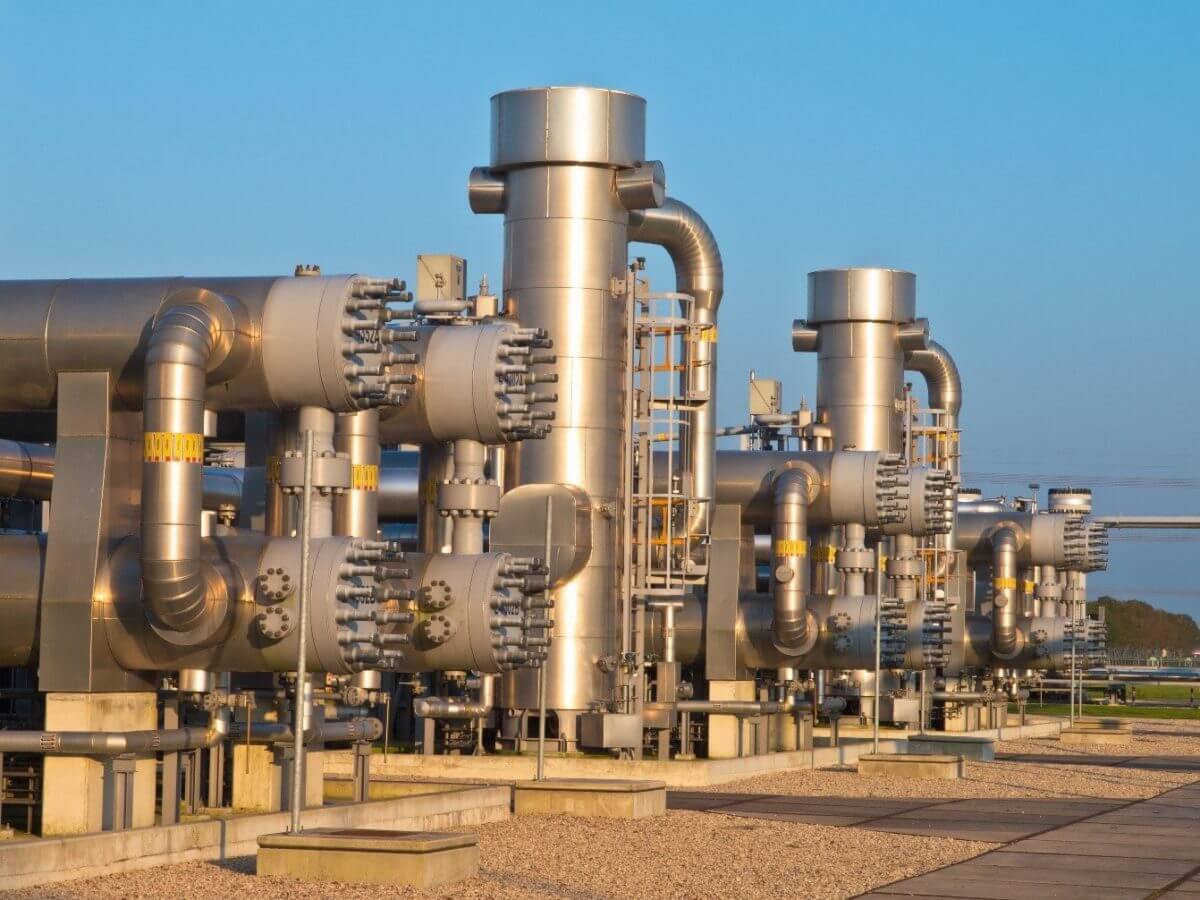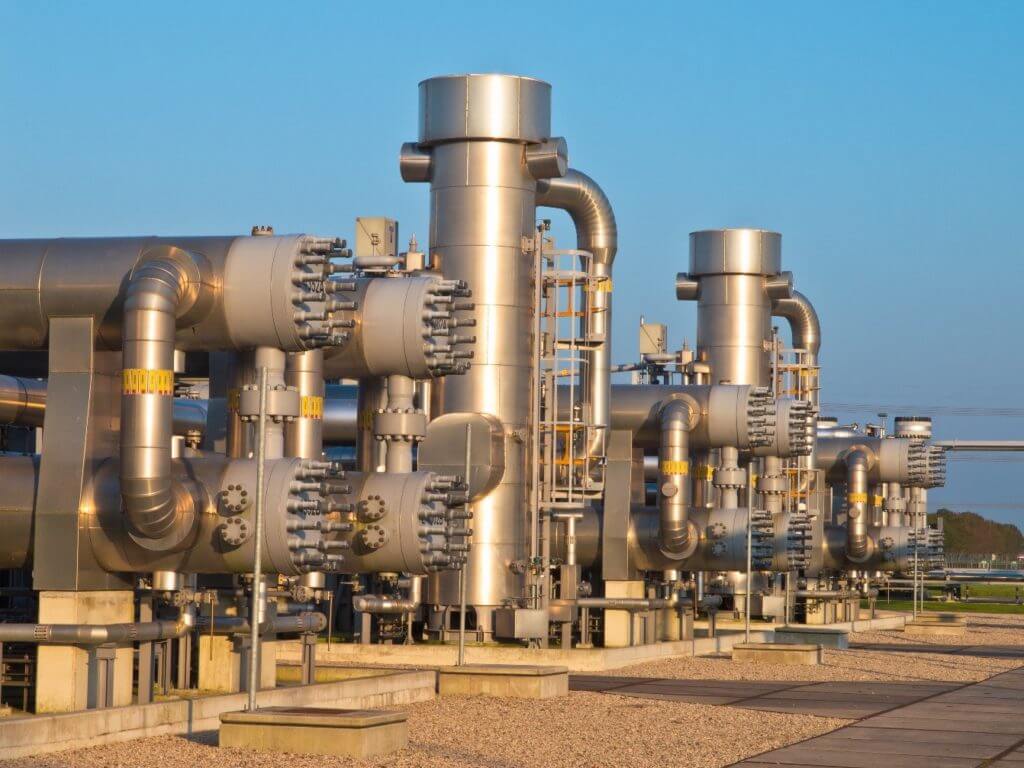Weekly EIA Natural Gas Storage Report – How to Read?

Weekly EIA Natural Gas Storage Report – How to Read?
The energy sector in the U.S. is marked by the preponderance of fossil fuels (77.8% of primary energy production and 80.1% of primary energy consumption ‘;in 2018): oil (23. 9% of production, 36.5% of consumption), coal (16.0% and 13.1%) and natural gas (39% and 30.6%). Let’s take a look at what the EIA natural gas report is and how to read it. Furthermore, we will take a grasp of the exporting volumes and gas production.
What is EIA?
The EIA (Energy Information Administration) is a government agency that analyzes independent energy information. EIA is the primary government authority on energy statistics. The Energy Information Administration’s (EIA) Natural Gas Inventory Report measures the change in the number of cubic feet of natural gas counted in underground inventory during the week prior to release. On their website you can find short term and long term outlooks regarding the natural gas storage, exports, consumptions and many more.
Weekly EIA Natural Gas Report

There are lots of interesting data in Weekly Natural Gas Storage Report
report, for example: underground working natural gas inventories level, weekly net change, comparisons to historical levels, statistical measures for each of the five U.S. regions, working gas in storage, increase in natural gas storage, decrease in natural gas storage.
Where you can find weekly EIA Natural Gas Report
You can find the eia weekly natural gas storage report on the official EIA website and the release time is Thursday at 10.30am EST.
How to analyze the EIA Natural Gas Storage Report?
If you have wondered how to read the EIA natural gas report, here is the explanation. The Natural Gas Storage Report points out estimates of natural gas held in underground storage. The report consists of inventory numbers from across five regions in the US: Midwest, East, Mountain, South Central and Pacific. The natural gas stored underground is working gas also called “base gas.”
The total volume of stored gas appears in BCF units – billions of cubic feet. The weekly report points out inventory levels for the previous week and current week. Also it shows changes across each region. The report also tracks gas inventories from the previous year. And it gives a five year historical average per region.
EIA natural gas report – Natural gas reserves
Proven reserves of natural gas in the United States were estimated by BP at 12,600 Gm3 (billion m³) at the end of 2020..
These reserves ranked the United States 5th in the world with 6.7% of the world total, compared to 19.9% for Russia, world no. 1, 17.1% for Iran, 13.1% for Qatar and 7.2% for Turkmenistan.
According to the World Energy Council (2013 World Resources Report), proven recoverable reserves of natural gas in the US at the end of 2011 were 7,716 billion m3, ranking 6th in the world: 3.7% of the total world, and its production of 648 billion cubic meters (2nd in the world), which left only 12 years of reserves.
Reserves at the end of 2008 were mainly located in Texas (31.7%), Wyoming (12.7%), Colorado (9.5%) and Oklahoma (8.5%); offshore reserves in the Gulf of Mexico accounted for 5.5% of the total.
Natural Gas Production USA

In 2020, the United States produced 914.6 Gm3 (billion m³) of natural gas, or 32.93 EJ (exajoules), down 1.9% in 2020, but up 59% since 2010. They rank first in the world with 23.7% of world production, ahead of Russia (16.6%).
The production and also consumption of natural gas in the United States quadrupled between 1950 and 1970 to 566 billion m3, then declined and stabilized in 1986.
Since then, the country has imported an increasingly large part of its gas until the end of the 2000s, which saw the trend reverse with the exploitation of shale gas.
In 2008, gas consumption stood at 675 billion m3, while production reached 583 billion m3; the United States then imports the difference, mainly through gas pipelines from Canada—which provides 90% of imports—and through LNG carriers that deliver liquefied natural gas from five countries.
The largest producing states in 2007 were Texas (30%), Wyoming (10%), Oklahoma (9%) and New Mexico (8%), while 14% of production came from offshore fields of the Gulf of Mexico.
In 2009, production increased to 624 billion m3, making the country the world’s leading producer.
Natural gas imports and exports

In 2020, natural gas imports from the United States reached 69.5 bcm, ranking fourth in the world behind China (139.1 bcm), Germany (102 bcm) and Japan (102 bcm), of which 68 .2 Gm3 by gas pipelines (Canada) and 1.3 Gm3 by sea, in the form of LNG.
Exports reached 137.5 Gm3, second in the world behind Russia (238.1 Gm3) and ahead of Qatar (127.9 Gm3), including 76.1 Gm3 via gas pipelines (Mexico: 54.3 Gm3, Canada: 21.8 Gm3) and 61.4 Gm3 by sea: Asia 26.4 Gm3, Europe 25.6 Gm3.
US LNG production capacity more than doubled in 2019, according to Rystad Energy, taking the US to third place in the world for LNG, behind Australia and Qatar.
In 2017, natural gas exports from the United States surpassed their imports for the first time since 1957, thanks to the shale gas boom.
The volumes of gas extracted in Appalachia have tripled in five years.Exports to Mexico by pipeline have more than doubled since 2014, and exports of liquefied natural gas (LNG) are growing to Asia and Europe.
Two LNG terminals came into service in 2016 and 2018, and four others are under construction, so much so that the United States should become the world’s third-largest LNG exporter by 2021, behind Qatar and Australia.
The United States became a net importer of natural gas in 1958; the share of net imports in consumption increased gradually to 16.4% in 2005 and 2007, then fell rapidly to fall back to 8.3% in 2011 and 6% in 2012 and 2013; in 2016, it fell to 3%: 0.7 Tcf (billion cubic feet) net, i.e. 3 Tcf of imports less 2.3 Tcf of exports. 97% of imports arrive from Canada by gas pipeline and 3% by LNG carriers, 95% from Trinidad and Tobago and 4% from Norway; 92% of exports are via gas pipelines, of which 36% to Canada and 64% to Mexico; 8% leave by LNG tanker
The exit points for gas exports by pipeline to Canada and Mexico are in:
- Clair, Michigan: 24.8%;
- Rio Grande City (Texas): 17.7%;
- Niagara Falls (New York): 9.8%;
- Roma (Texas): 9.6%;
- Clint (Texas): 7.2%;
- Ogilby Mesa (California): 6.6%.
The United States imports Canadian gas in its western part and exports its gas to the eastern part of Canada; to Mexico, they mainly export to the East (Texas) and a minority share to the West (California and Arizona).
In 2010, the United States (excluding Alaska) again became, for the first time since the second half of the 20th century, a gas exporter.
According to EIA projections, natural gas production in the United States would increase by 7% per year from 2022 to 2025, then by 1% per year until 2050; having become net exporters of natural gas in 2017, they should continue to increase their exports until 2050, via gas pipelines and LNG tankers.
Their export capacity is estimated at 60 million tonnes as of 2020; the expansion of the Panama Canal in 2016 will benefit this capacity by reducing the transit time between the Gulf of Mexico and the states bordering the Pacific Ocean.
The largest regasification terminal in the world, The Sabine Pass LNG terminal, initially intended for import when it was inaugurated in 2008, has been transformed into an export terminal.
Its owner, the company Cheniere, financed this transformation by signing long-term capacity reservation agreements with the major gas groups. Total will pay more than 300 million dollars per year to Cheniere for twenty years, in return for the right to buy 3 billion cubic meters of gas each year. Cheniere will have the ability to export up to 6% of US gas production. Half a dozen projects have already received approval from the public authorities, such as those of Dominion, on the east coast of the country (Virginia) and Golden Pass in Texas (ExxonMobil and Qatar Petroleum).
The Cheniere terminal at Sabine Pass began its first LNG tanker loading in January 2015. The commissioning of the terminal does not come at the best time: very dependent on the price of oil, the price of gas fell sharply in 2015: for a volume of 1 million BTU, American gas costs 7.50 dollars (costs of transport and liquefaction/regasification included) at the start of 2016, while that produced in Europe sells for 5.20 dollars. Cheniere has, however, negotiated export contracts for the next twenty years, which provide him with a guaranteed minimum flat rate of income, regardless of the fluctuations of the world market.
The post Weekly EIA Natural Gas Storage Report – How to Read? appeared first on FinanceBrokerage.
0 Response to "Weekly EIA Natural Gas Storage Report – How to Read?"
Post a Comment